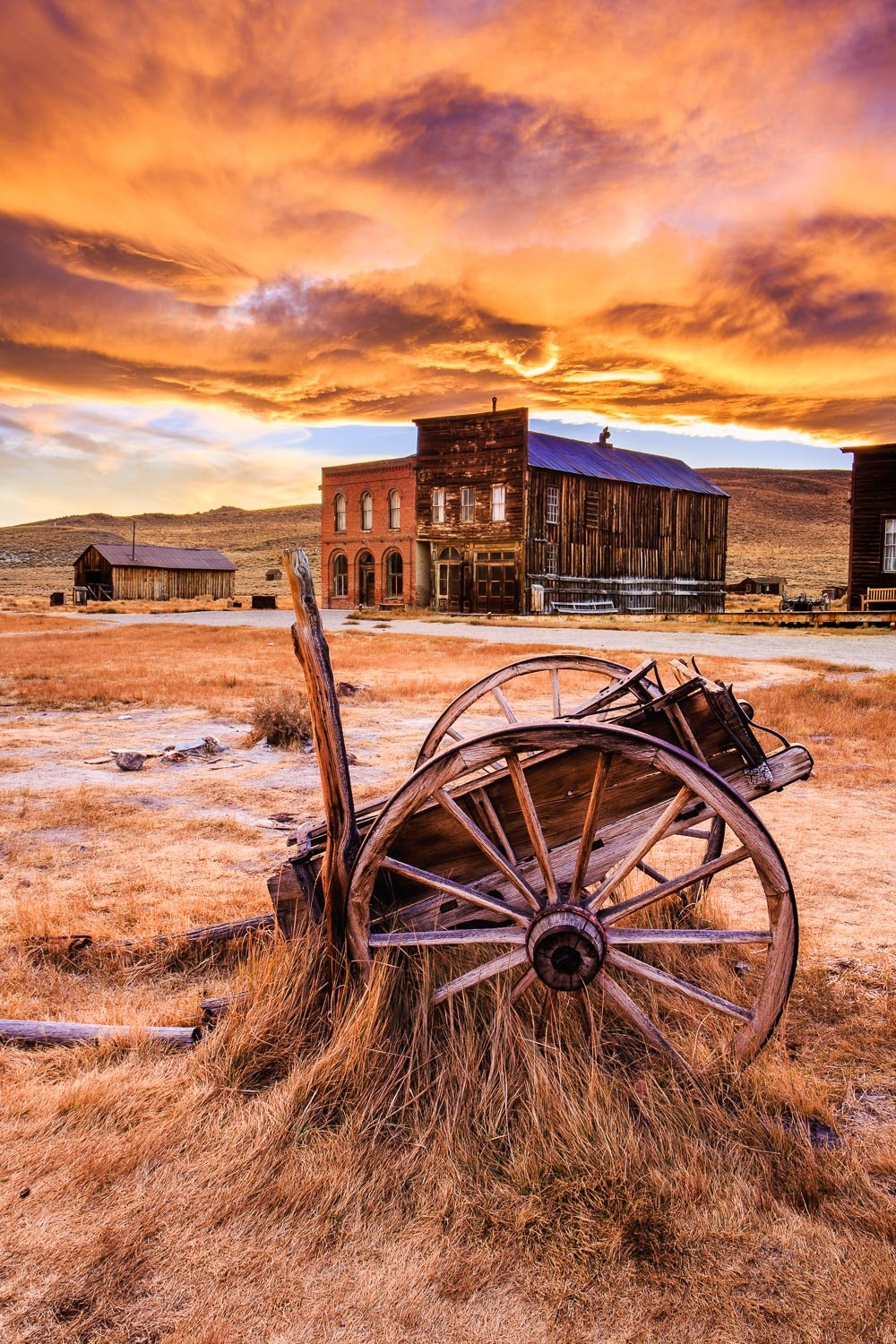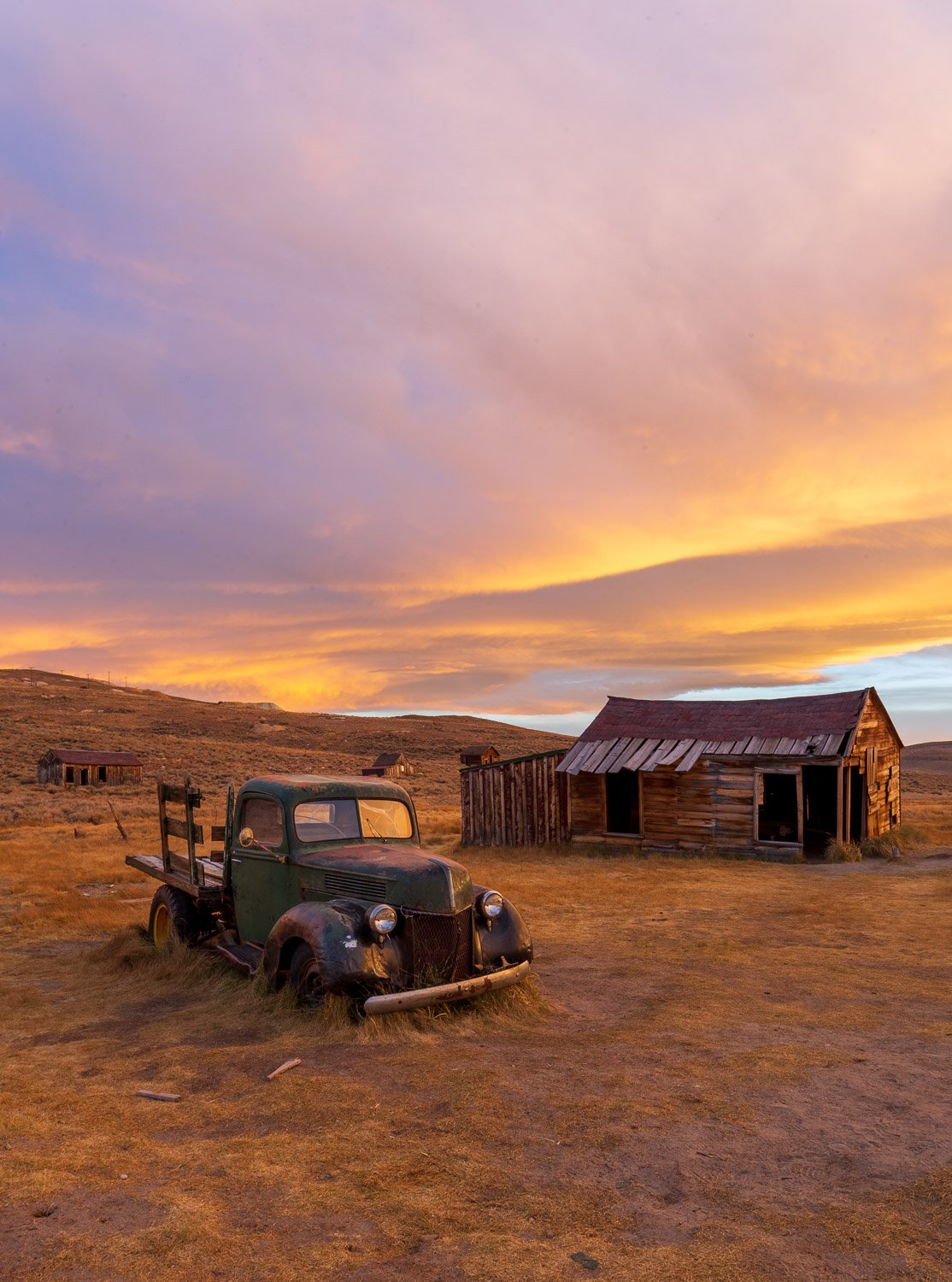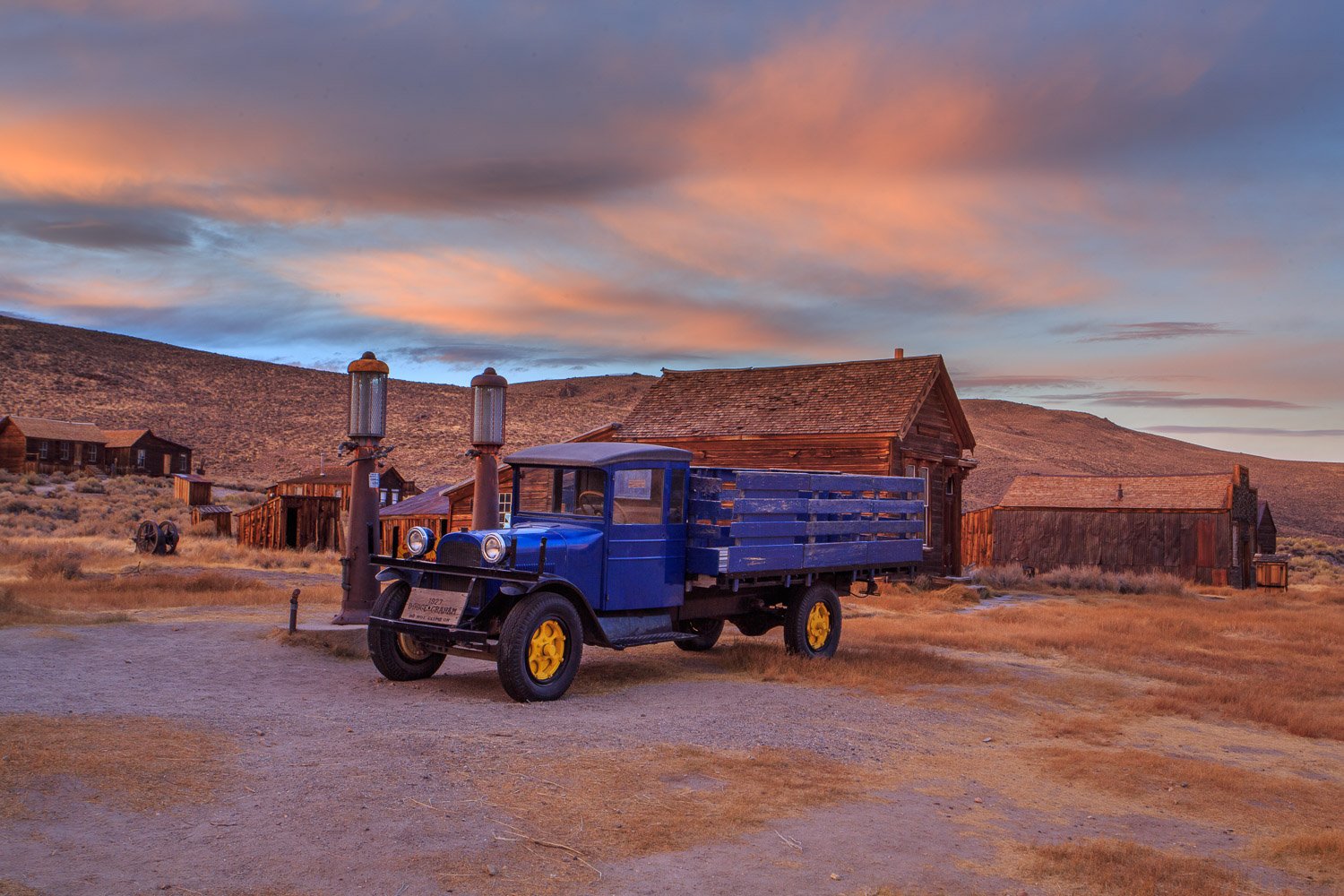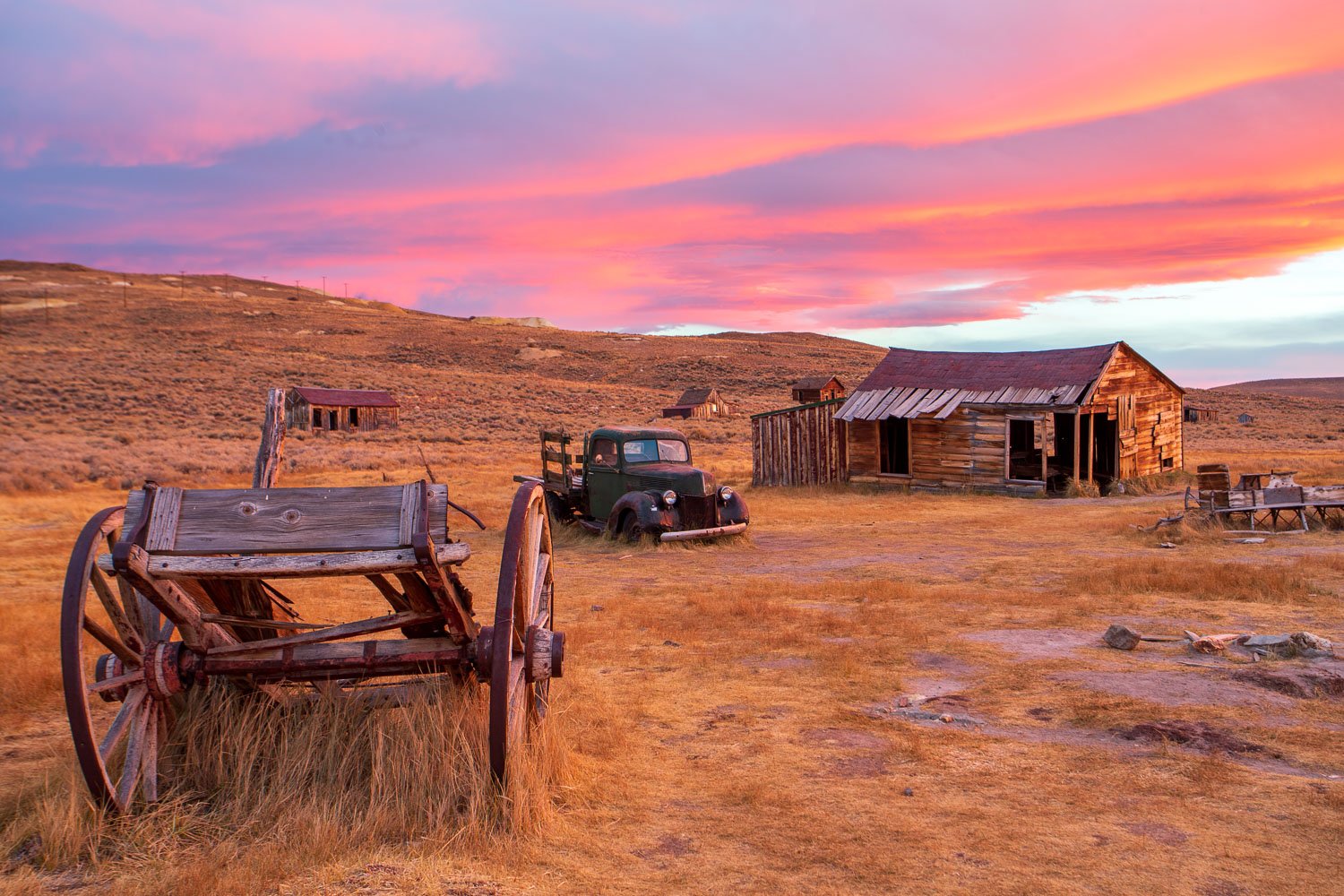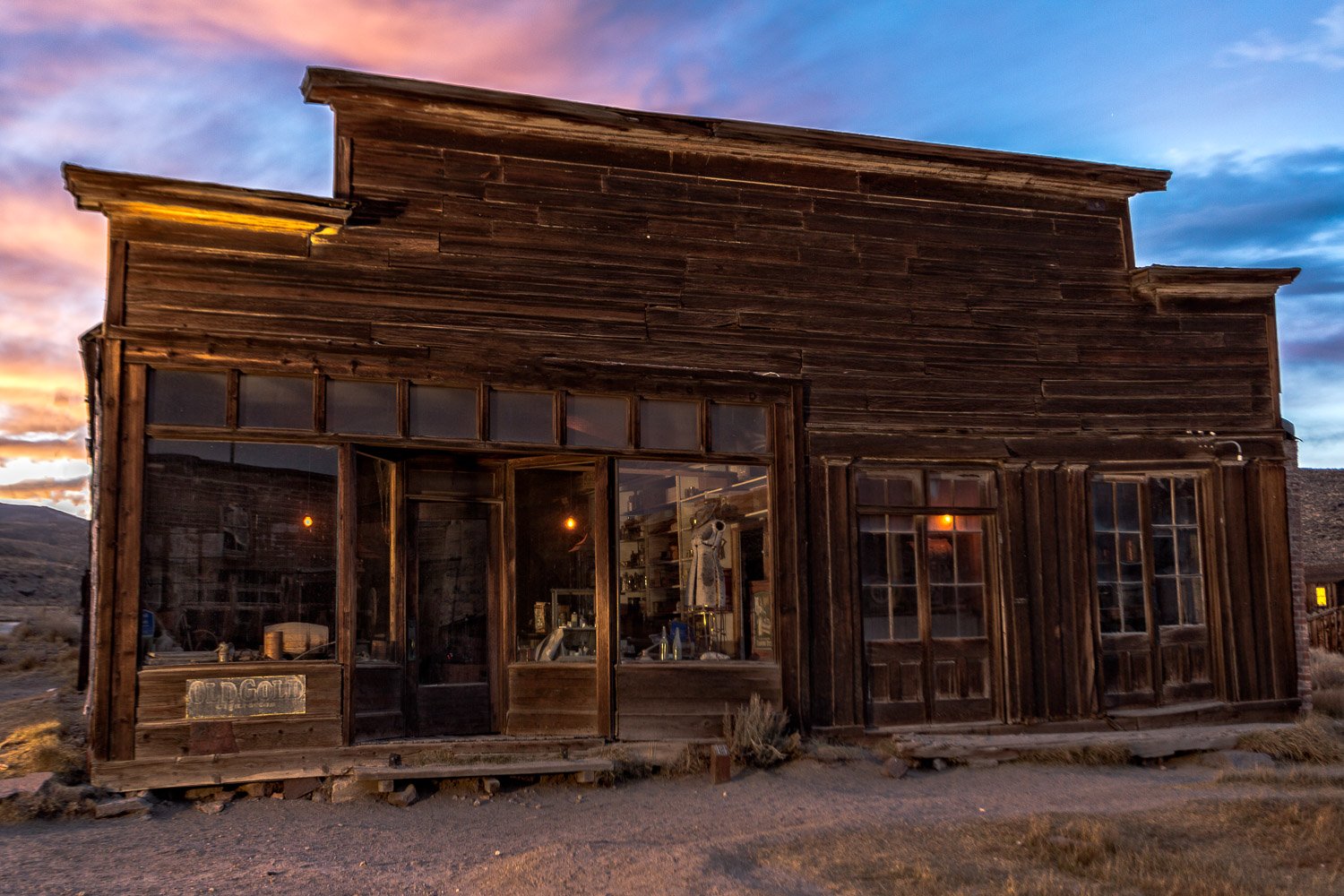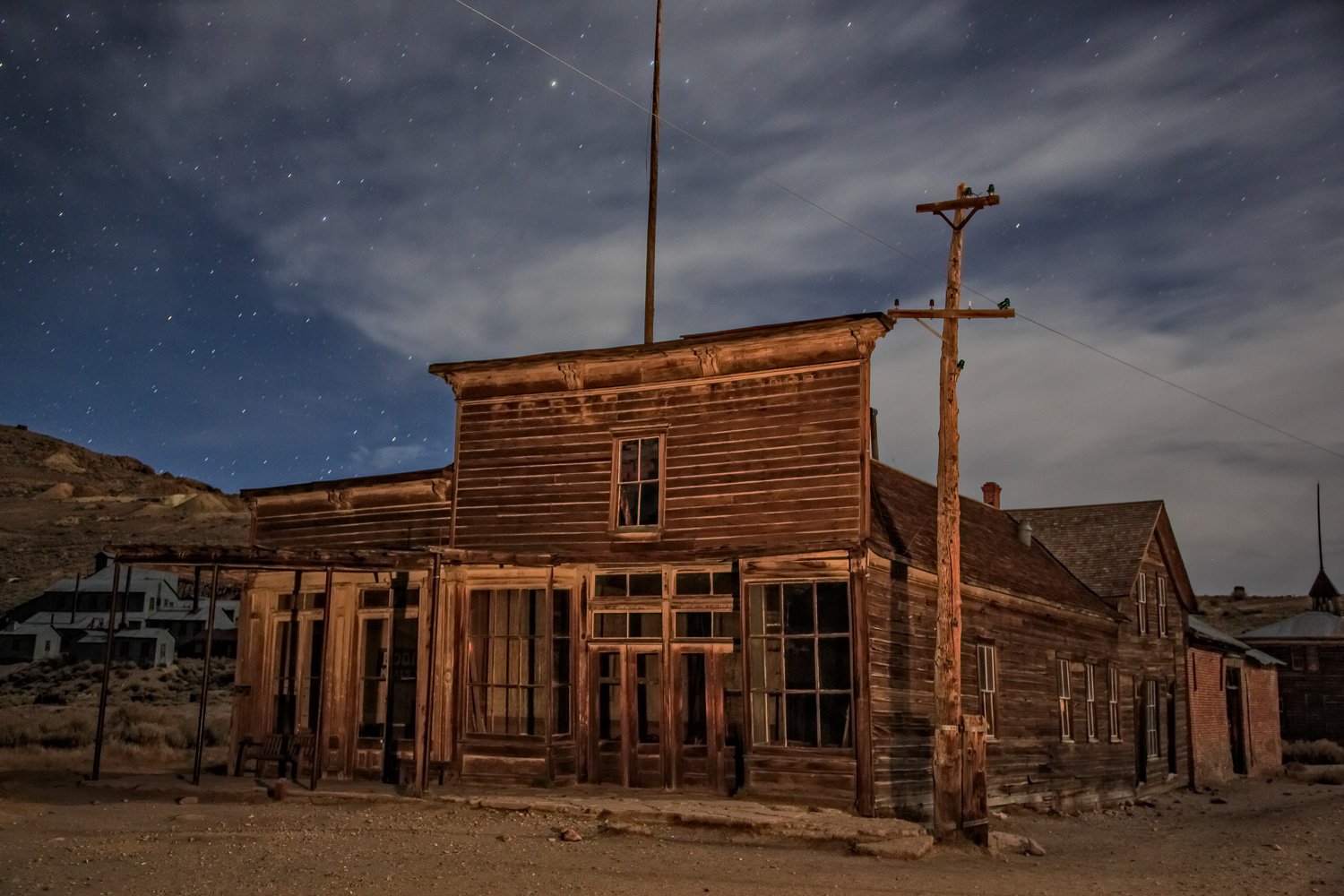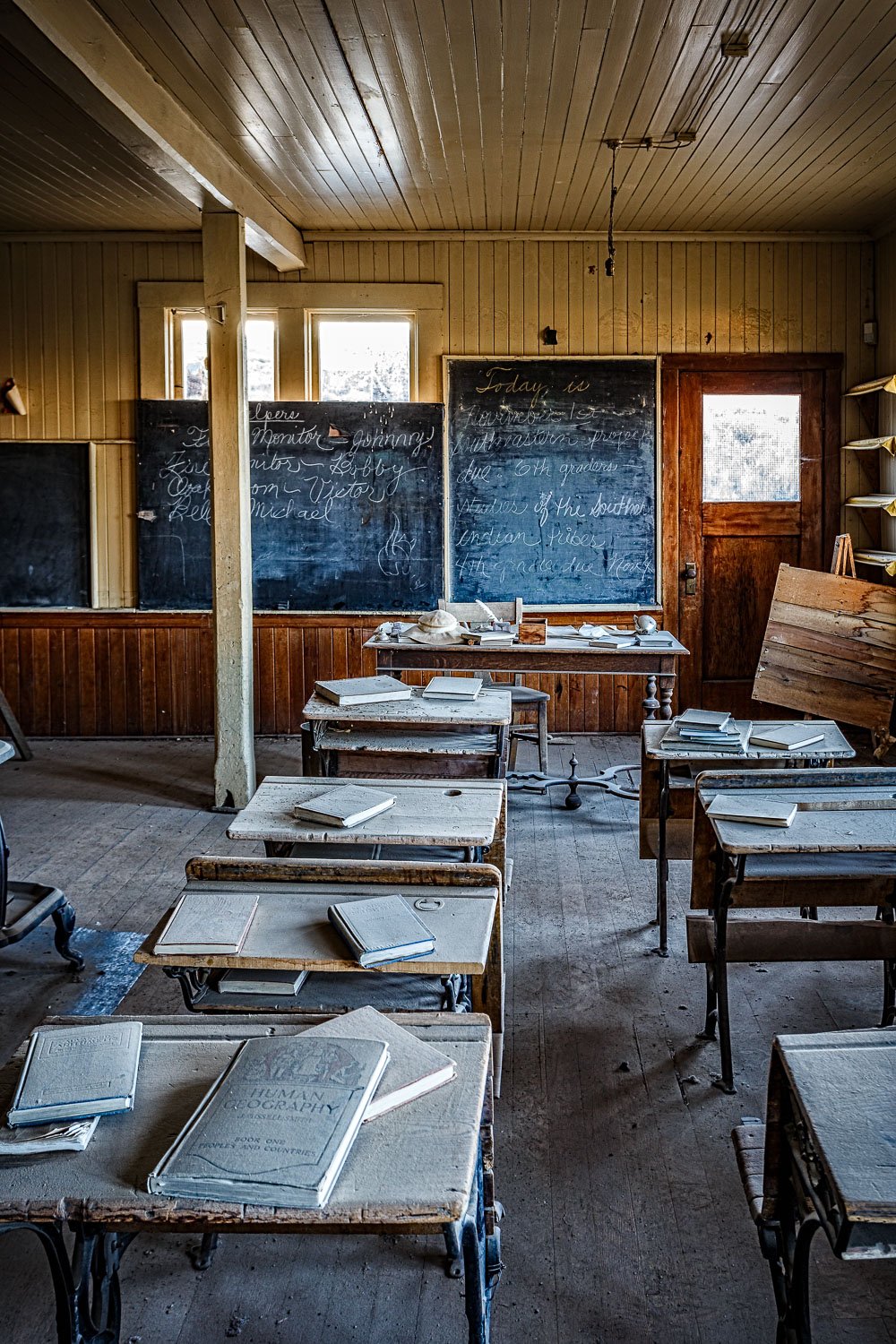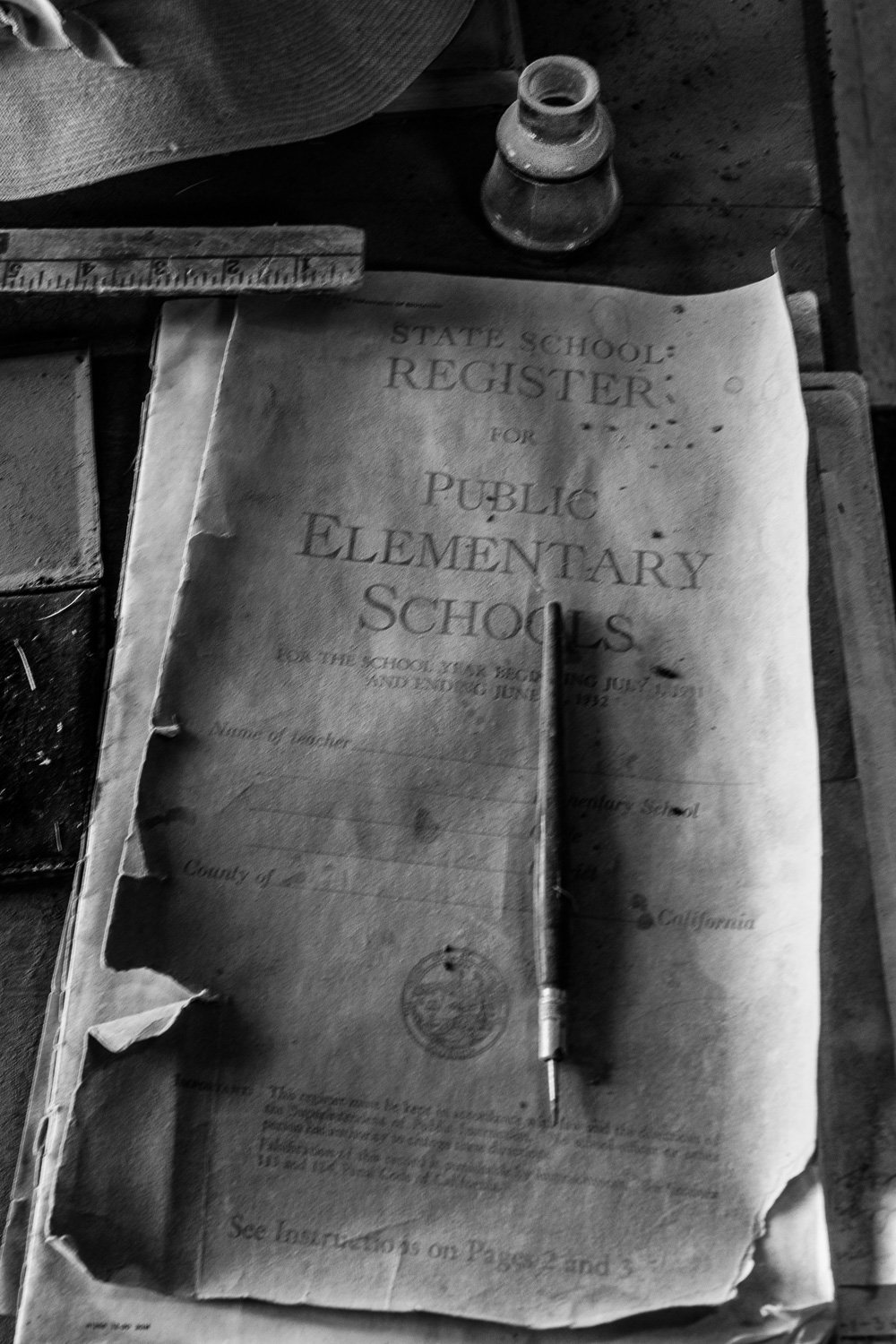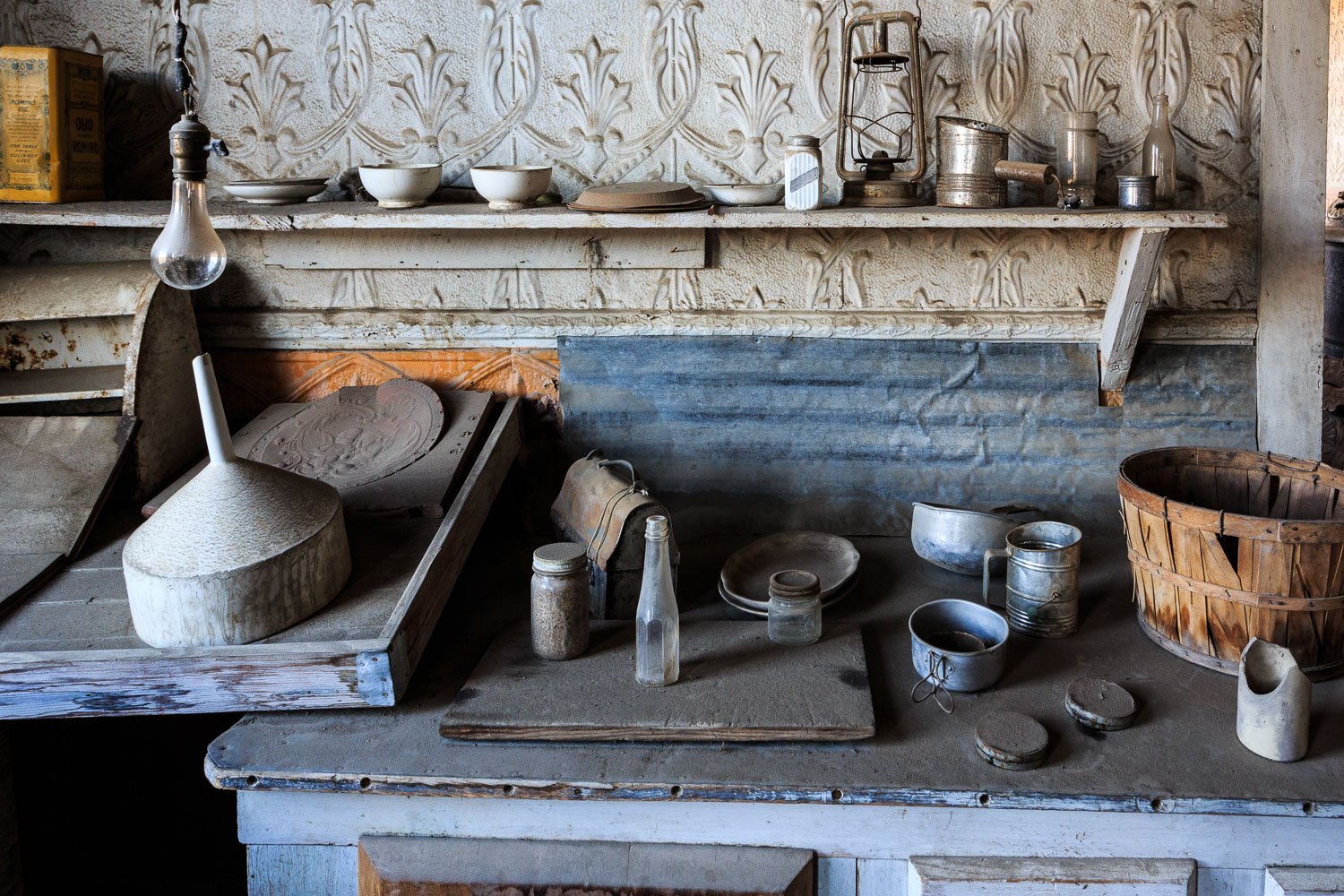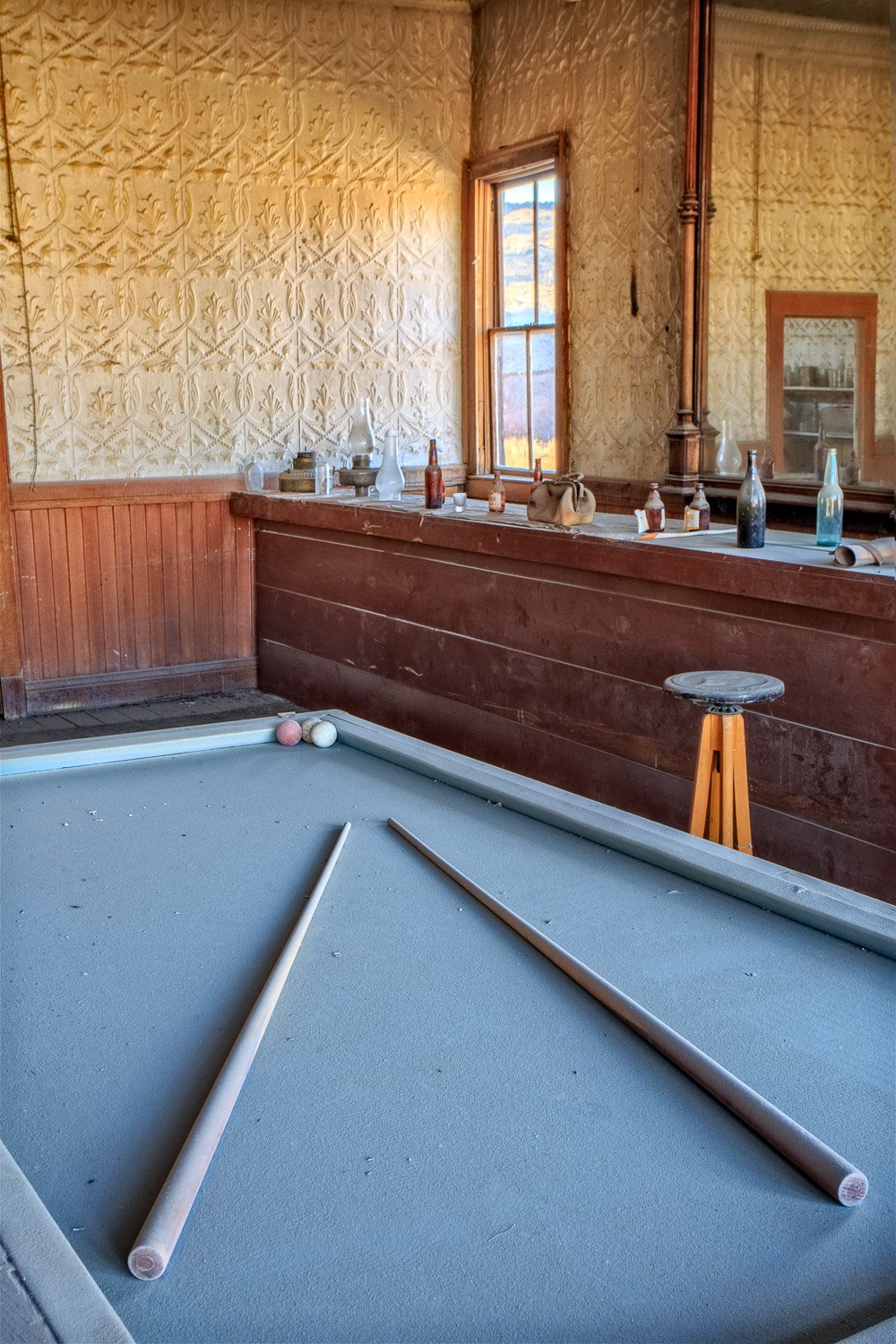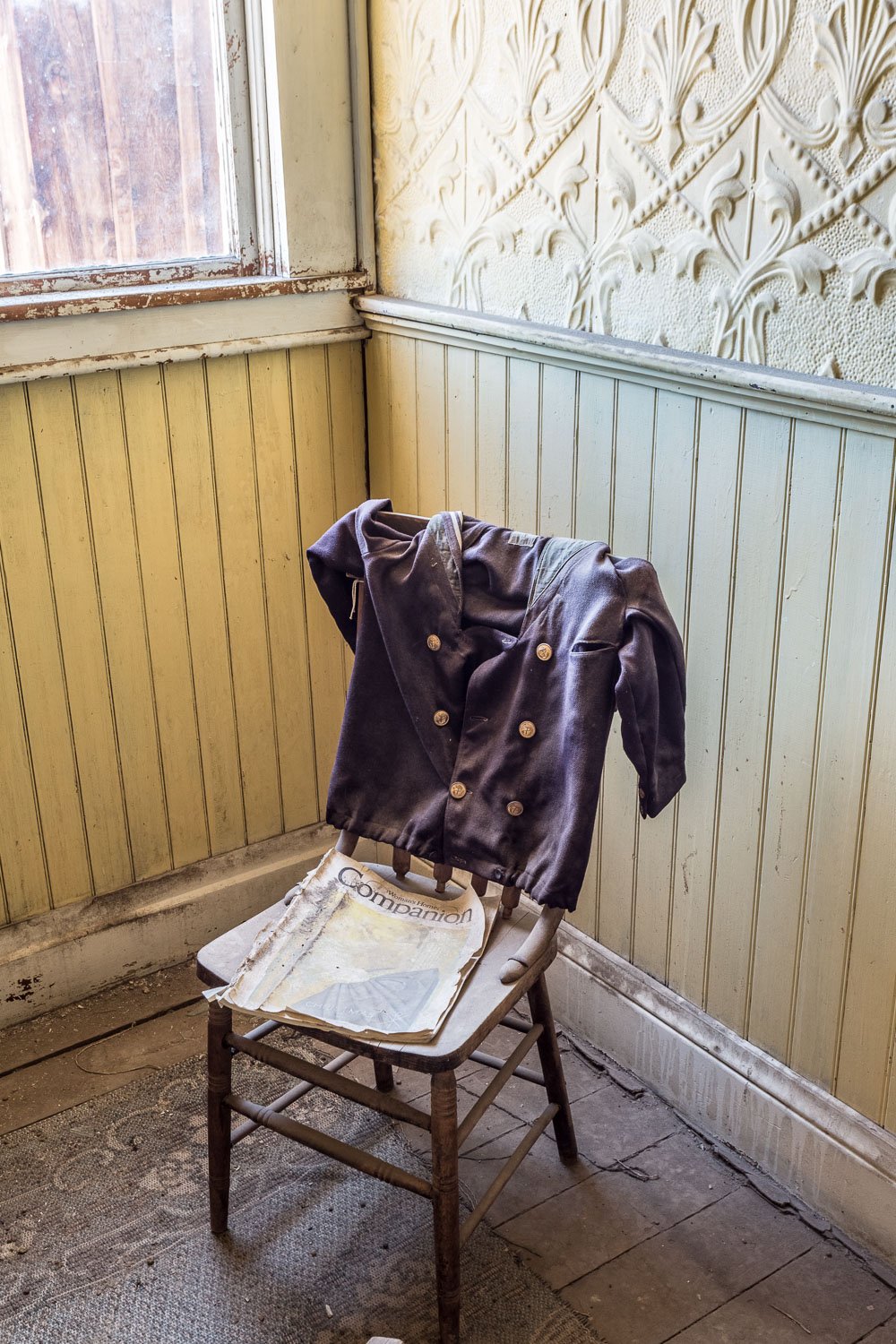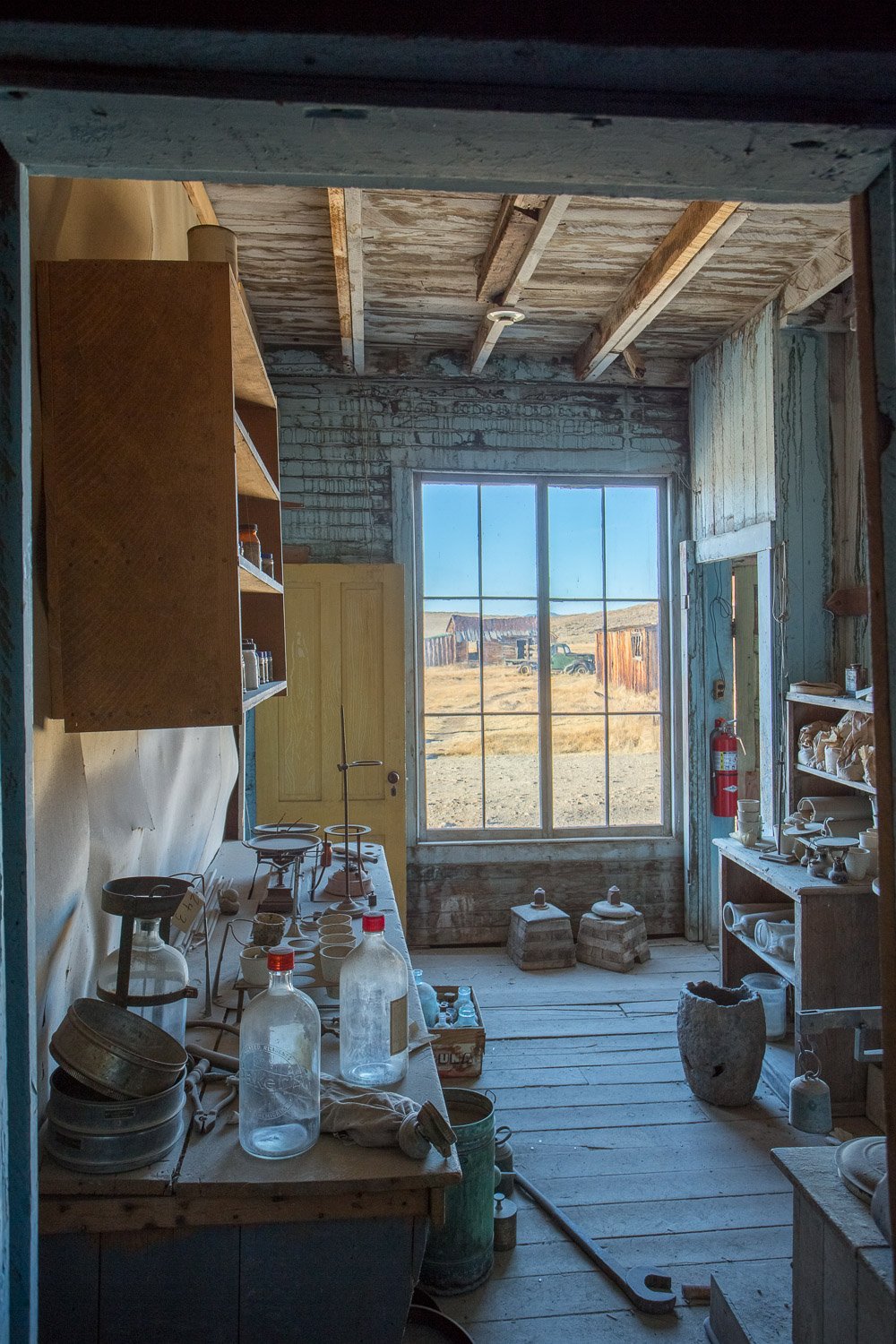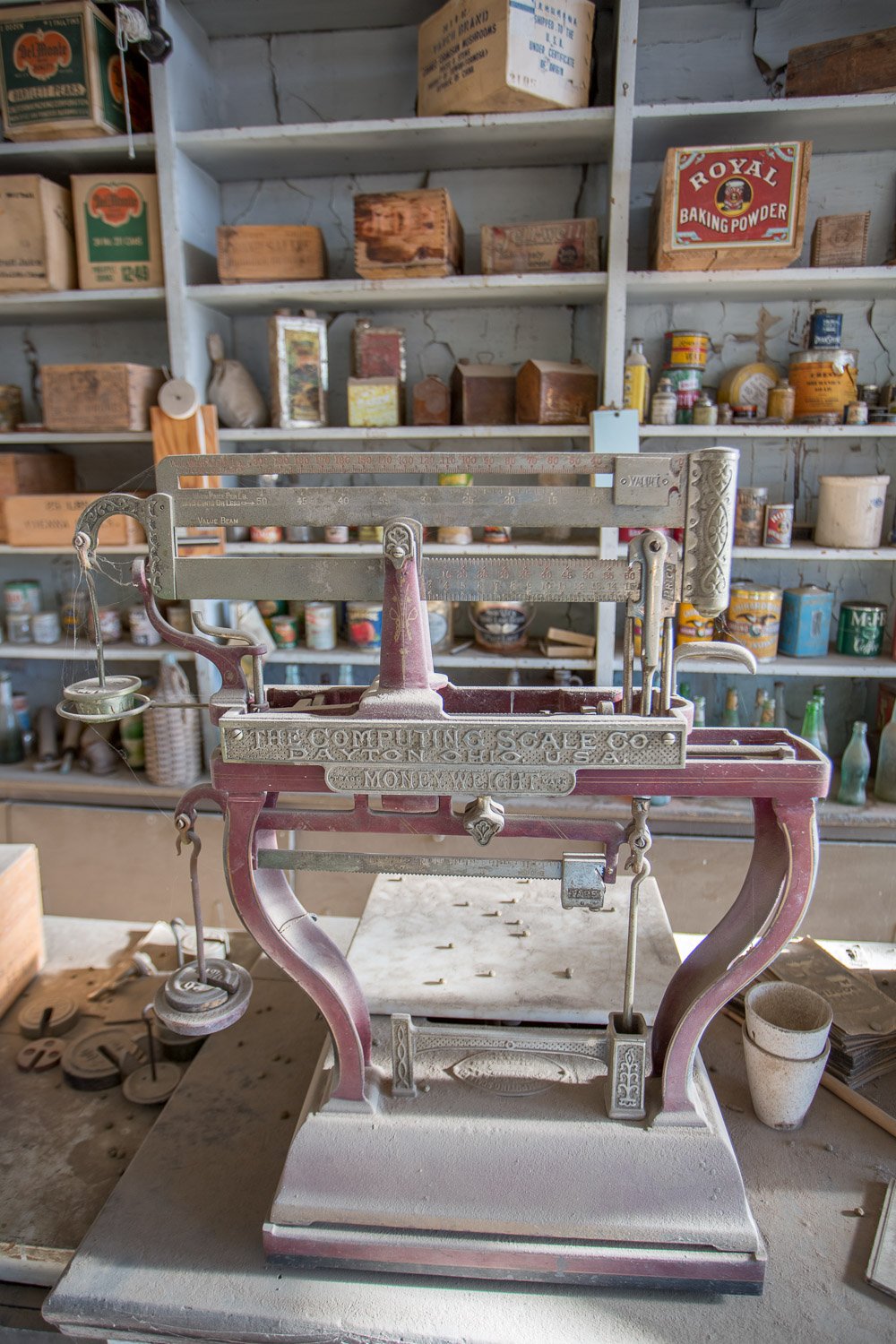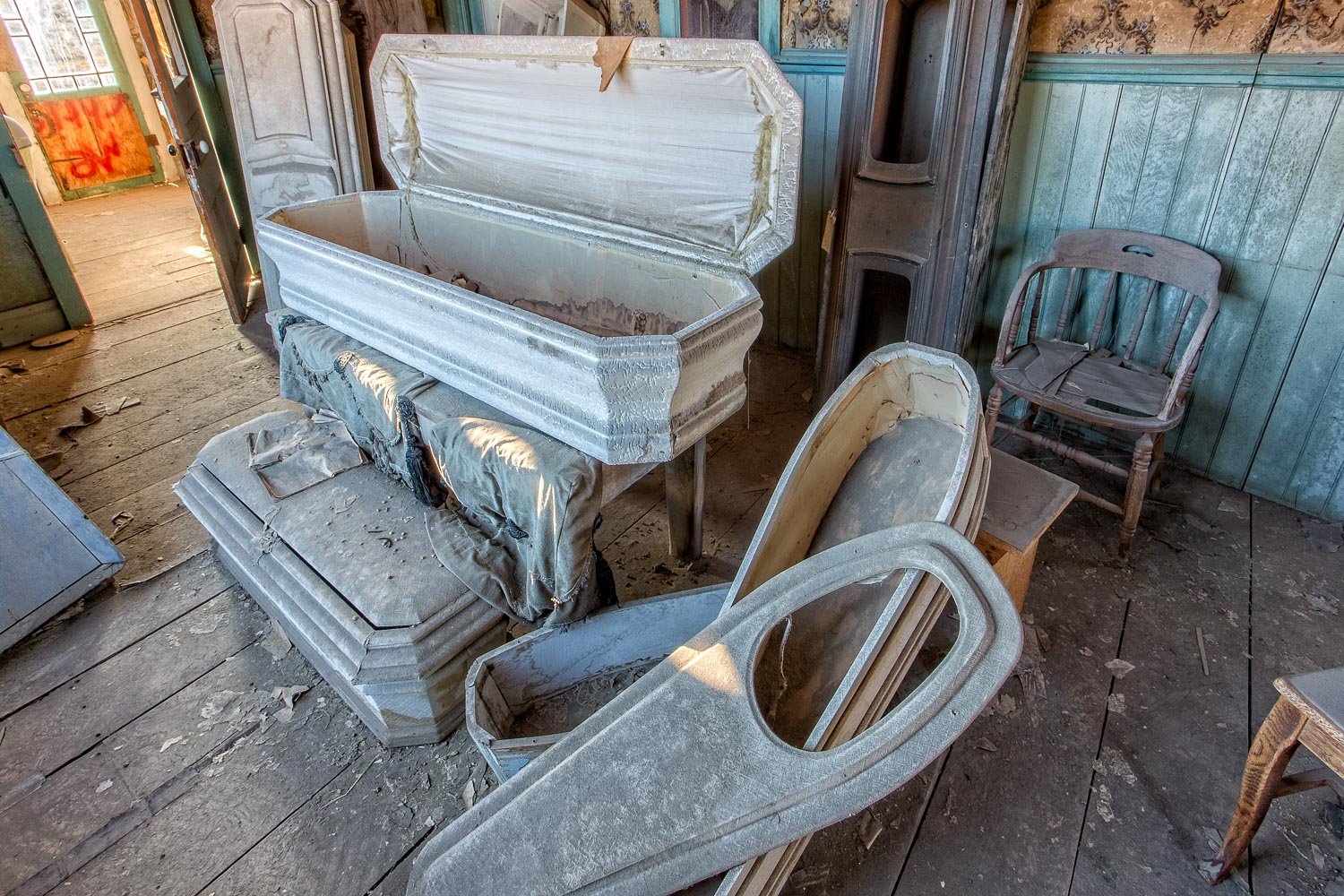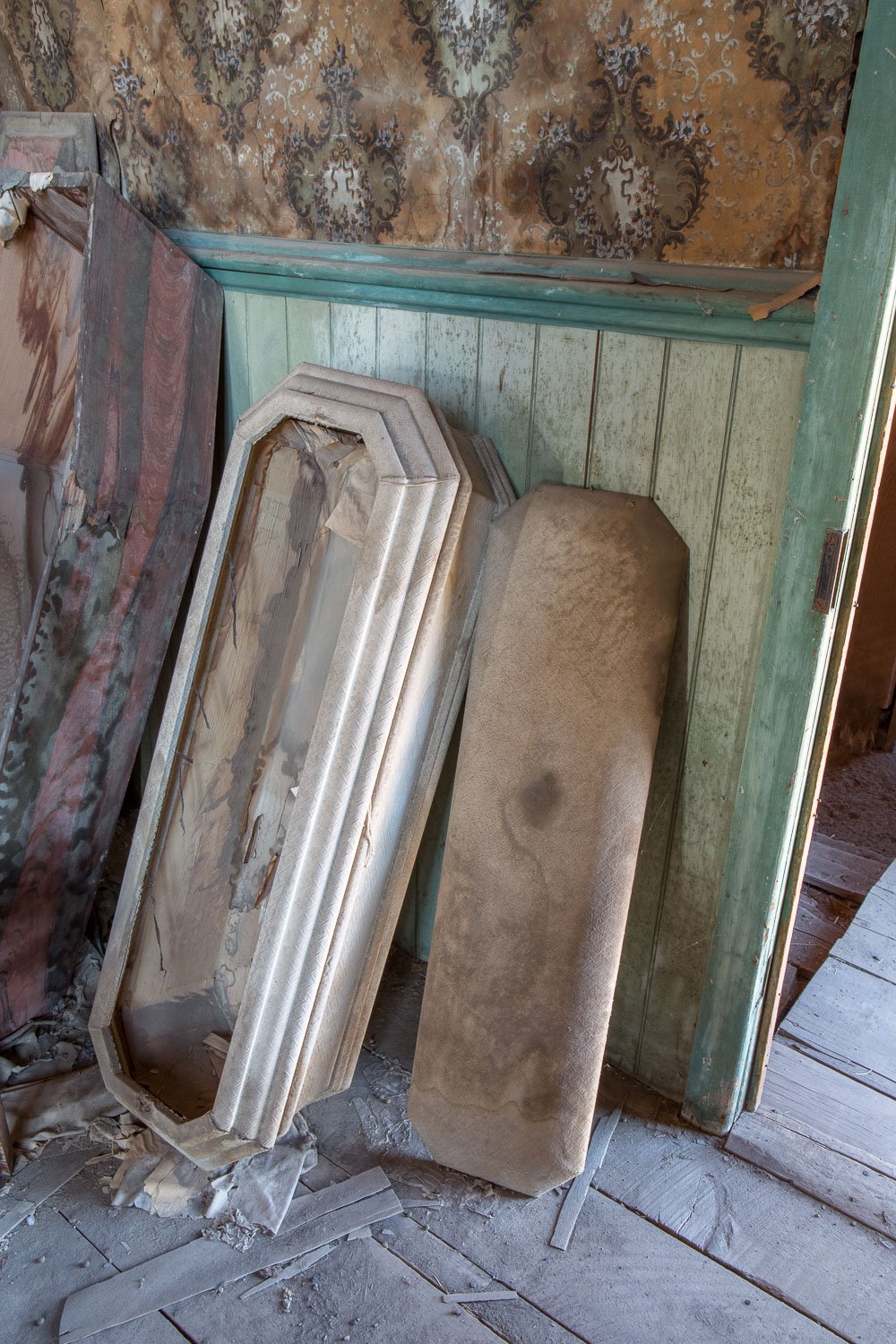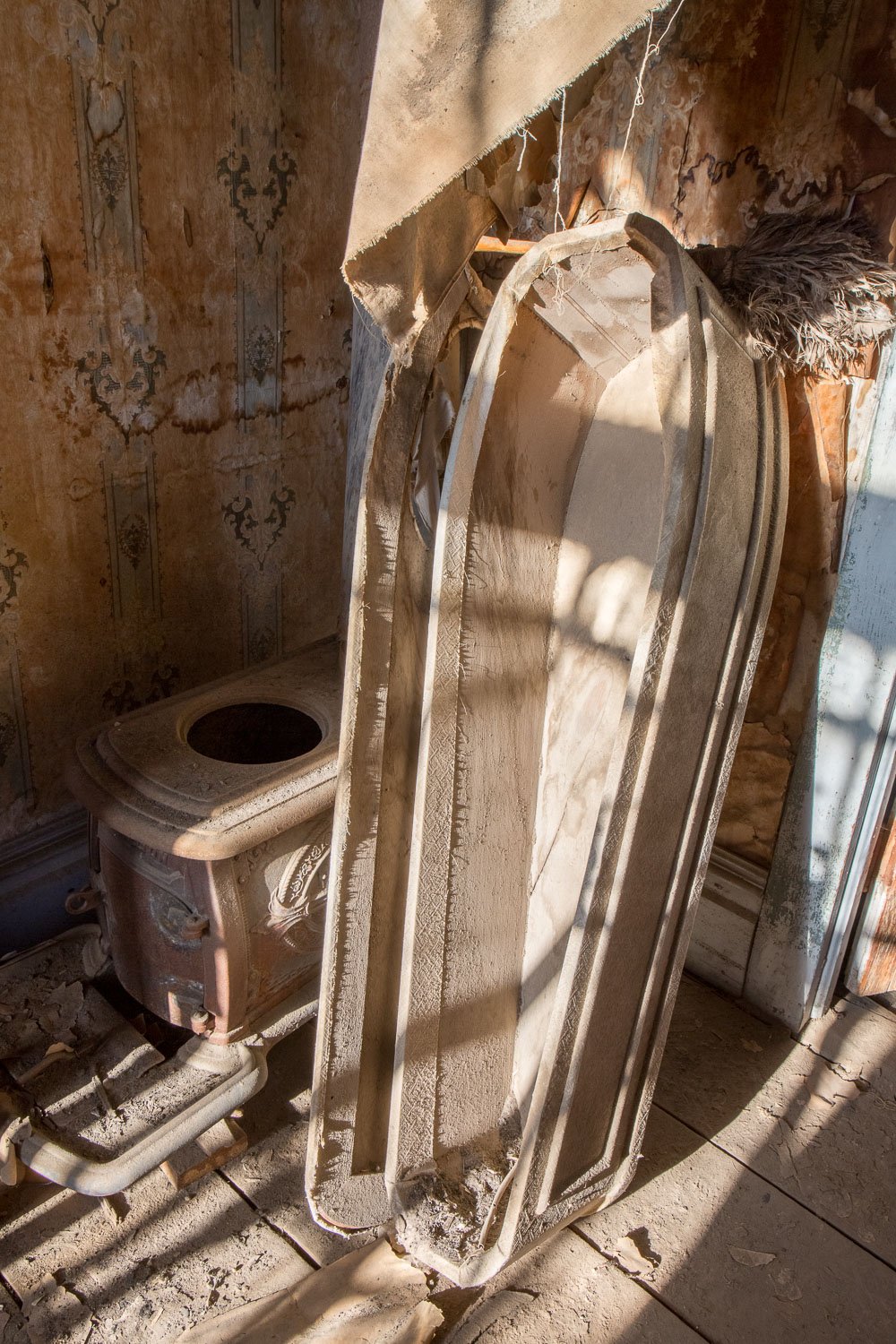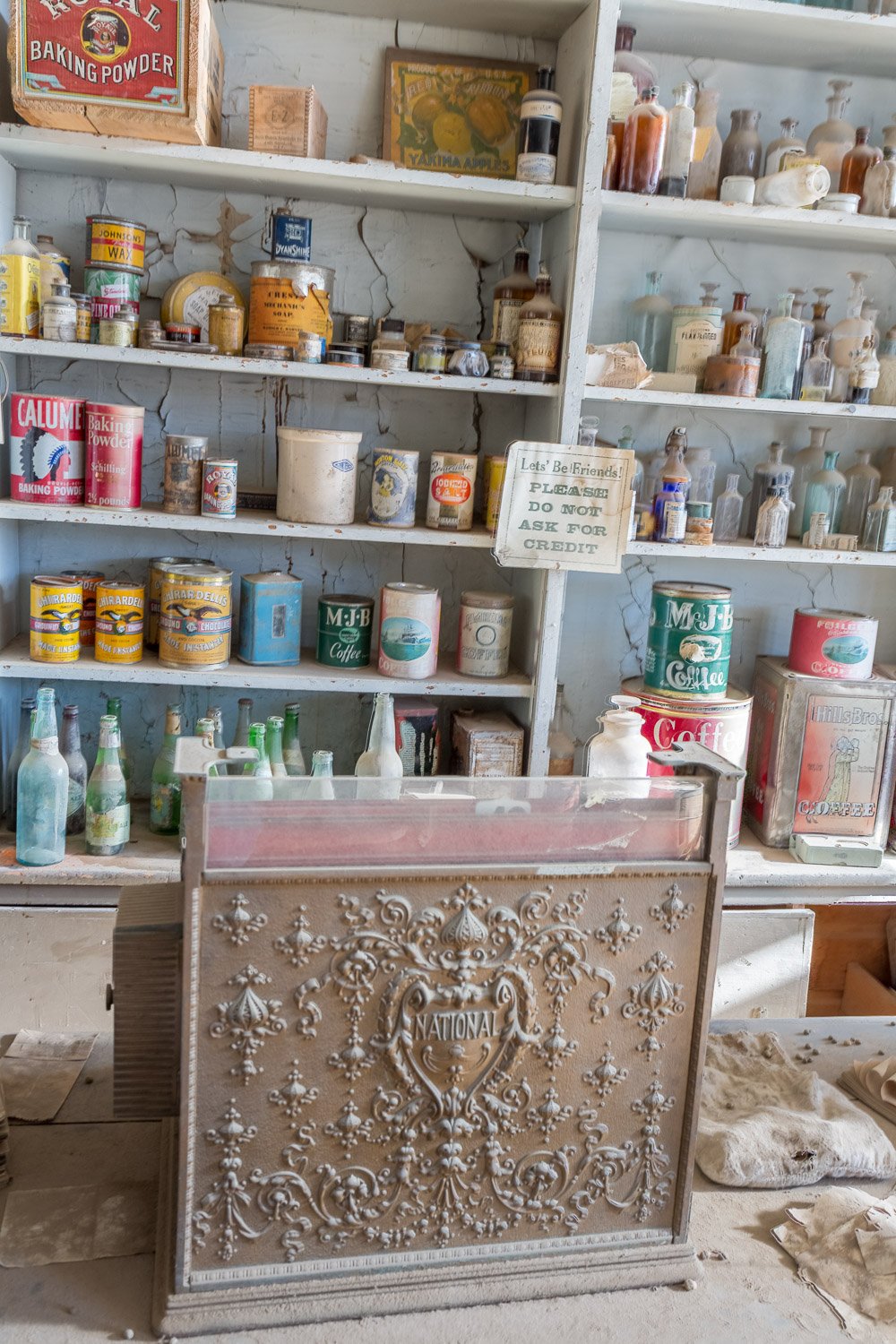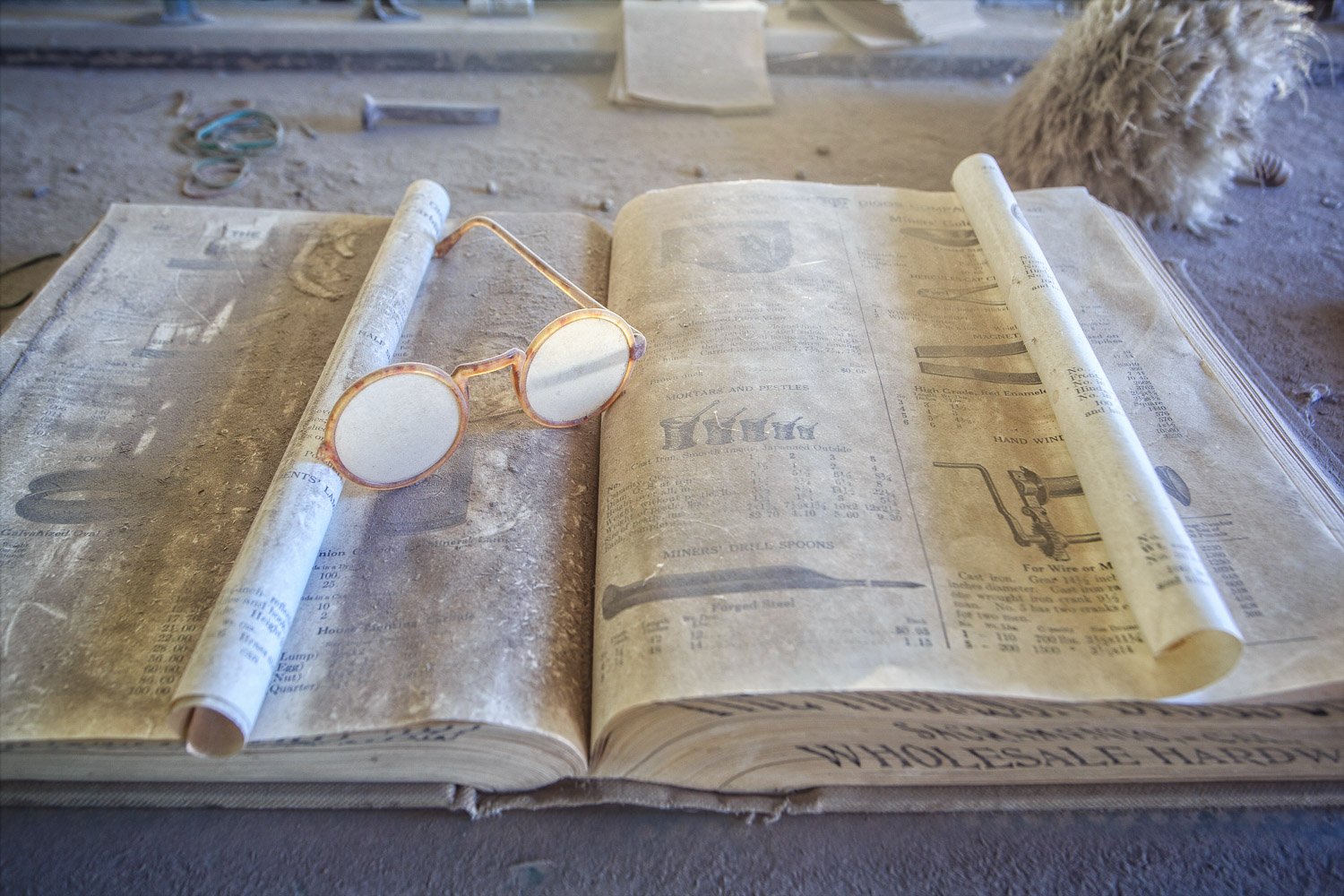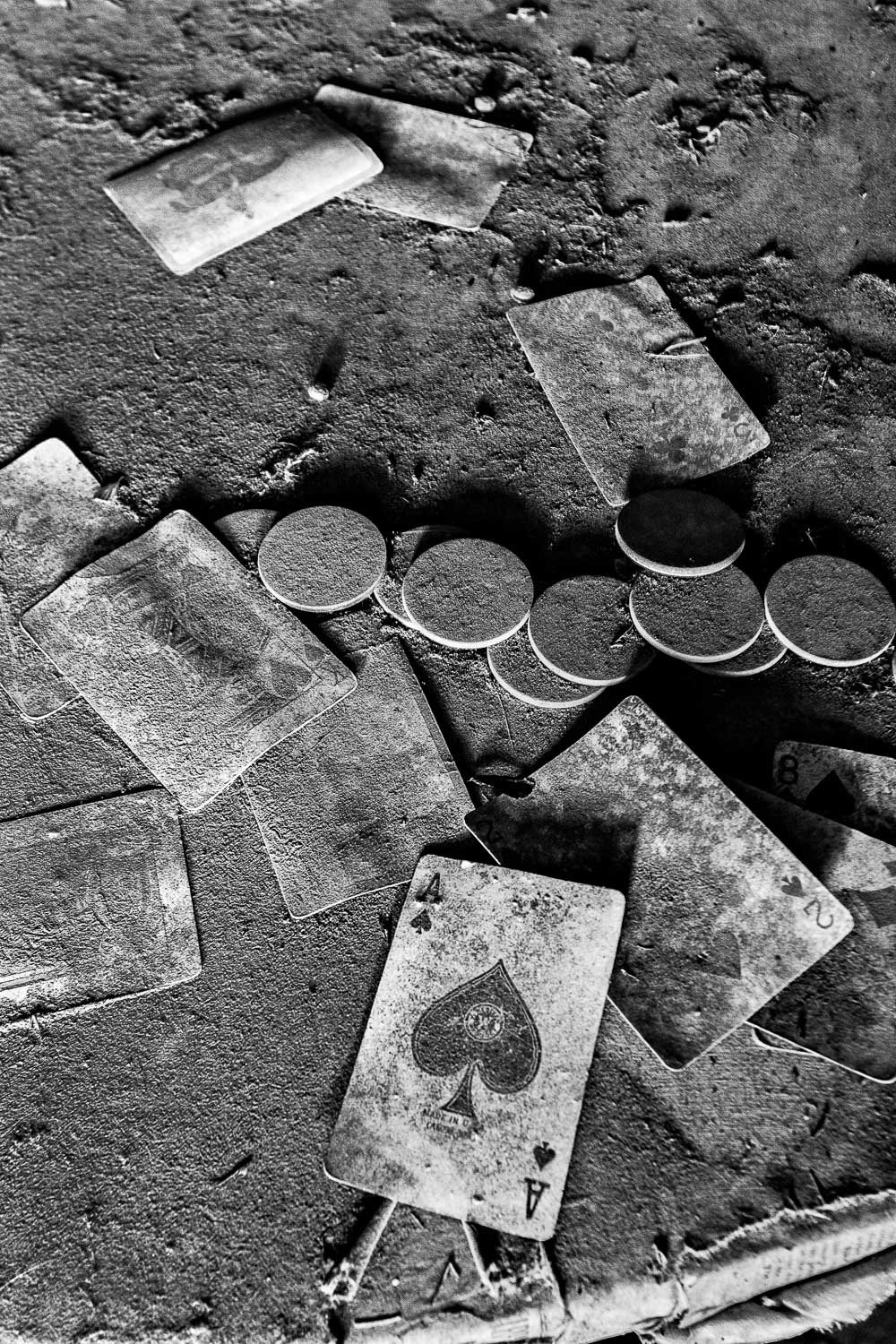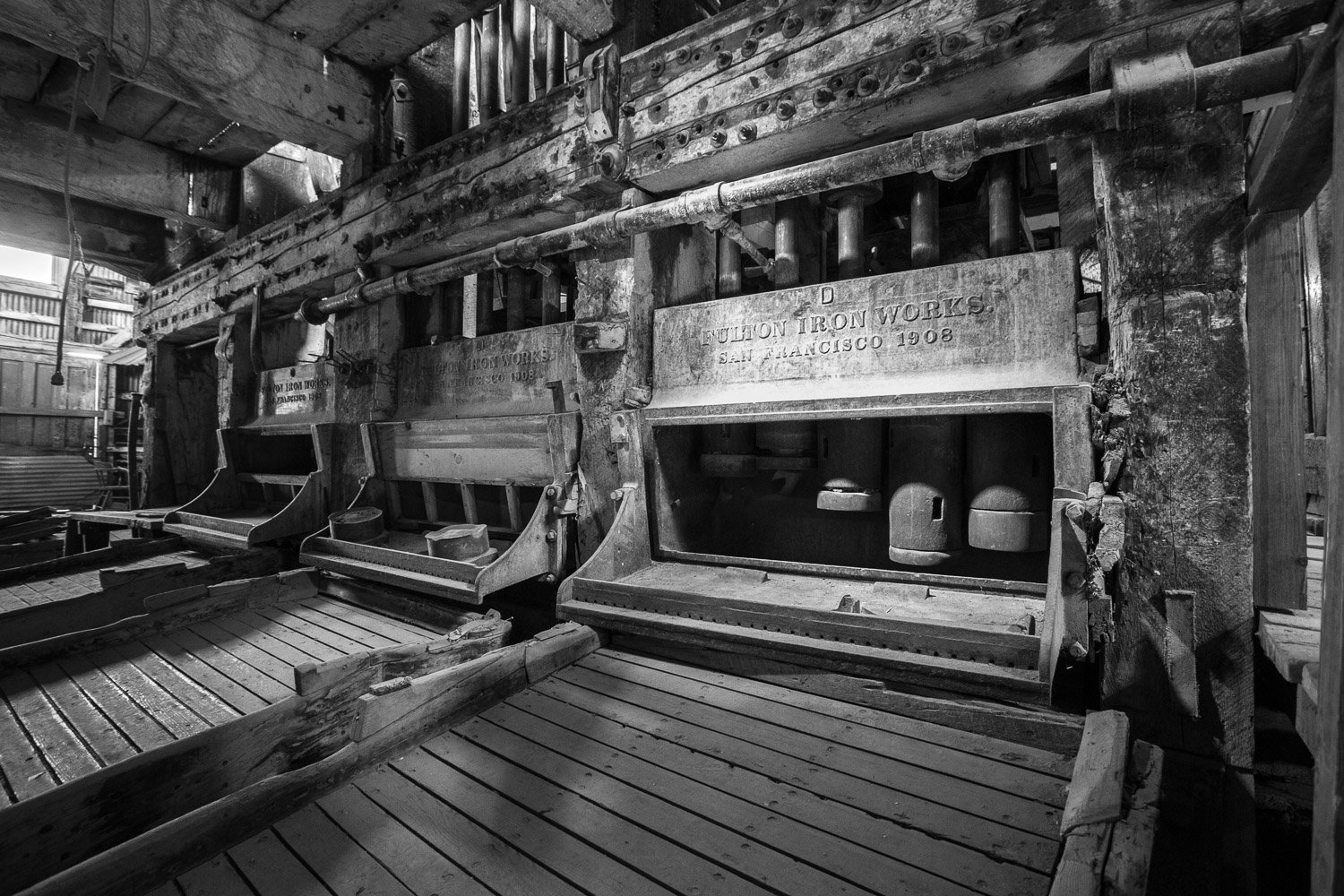Bodie State Historical Park, California
In the summer of 1859, four prospectors roaming around the foothills of the Eastern Sierras in search of gold discovered a placer (stream bed) showing of gold. Feeling confident in their placer prospects, the built a small cabin next to a nearby spring and return to the nearby mining camp of Monoville for the winter before returning to the mining claim in the spring. The deposit was almost forgotten as the large mines in Virginia City were in full production mode and gold mines in Aurora were developing rapidly.
In 1876, only a few dozen people called Bodie home but by 1879, the town population swelled to an estimated population of approximately 10,000 people. The rapid growth brought a diverse population to the town, bringing with it a broad range of ethnicity and culture. As people came, the town began to evolve and neighborhoods became established. The mines and mills to the east of town brought economic wealth into town; the business district blossomed in the center and towards the south end of town; the northern part of town came to life at night as the Red Light District, home to dozens of saloons, gambling halls, and brothels. Chinatown was also at the northern end of town beckoning miners with their opium dens. Bodie quickly gained a reputation as a “shooters town” due to the gunfights, brawls and stagecoach robberies that often erupted during the peak of the town’s prominence.
At it’s peak, Bodie’s Main Street stretched for over a mile and the town had 2 churches (Catholic and Methodist), over 60 saloons and taverns, a telegraph station, 22 operating mines, union halls, schools, 2 newspapers, several general stores and mercantiles, and many large stamp-style ore mills, During the 1870s and 1880s, it is possible that Bodie was likely the 6th or 7th largest city in California at the time.
Bodie was home to the installation and operation of the world’s first long-distance electrical transmission network. In 1892, 12.5 miles of suspended power lines were strung linking a 3300 volt hydroelectric station on Green Creek with the Standard Mine turning on the lights for the first time. Also in 1892, much of the town west of Main Street was destroyed when a kitchen fire spread out of control. Though the town rebuilt, tragedy would strike again in early summer of 1932 when most of the town burnt to the ground. Accidentally started by a young boy playing with matches, this event sealed the fate of the once illustrious mining town. Major mining in town ended in 1915 and smaller-scale mining efforts stopped in the early 1950s. As residents left, the remaining buildings began to decay, inviting visitors today to take a step back in time, wandering the now empty streets, looking through windows of the over 100 original buildings that remain, and imagining what life would have been like back in the late 19th-century western lawlessness.
